Santa Croce in Florence is one of my favorite places in town. The big square, surrounded by little bars and leather shops, and the beautiful façade of the Basilica, have always had a hypnotic effect on me. In this post, I will talk to you about the Basilica of Santa Croce, the biggest Franciscan church in the world, and a precious chest of art, history, frescoes, and sculptures.
With about one million visitors every year, the Basilica of Santa Croce is one of the most-seen museums in Italy.
A bit of history of the Basilica of Santa Croce in Florence
The first stone of the building was placed in 1294 BC, to replace an older and smaller Franciscan oratory created in 1228 BC by St Francis. Only a century later, in 1385 BC, the building was completed (even if the façade was still missing).
The square of Santa Croce has always been a meeting point for artists, theologians, writers, humanists, and politicians. It was like a Speaker’s corner. It hosts the city market, knight tournaments, and the first Calcio Storico match, a historic tradition that began in 1530 BC that still lasts. Even the Basilica was not only a place for praying but also for public conferences. There was a wall to split the religious area for the believers from the laic one.
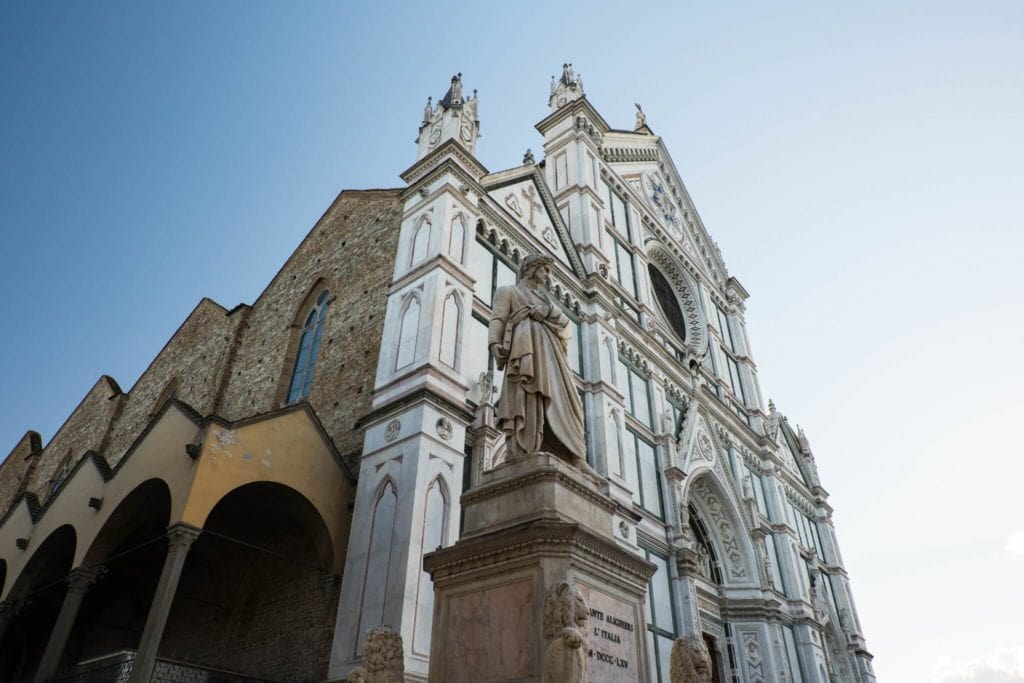
The most scenic part of the Basilica is, without a doubt, the façade. For more than three centuries it remained in pietraforte sandstones. Only in the ‘800s, when Santa Croce became a pantheon, the Italian architect Niccolò Matas completed the decoration. He chose a neo-Gothic style using different kinds of marble coming from different parts of Tuscany and from Egypt. Probably the architect was Jewish, and this should be one of the reasons for the existence of a Star of David in the center of the façade. He also decided to be buried outside of the temple under the churchyard.
The Big Flood of 1966
Santa Croce suffered other big changes during the XX century. In 1905, a portion of the cloister was demolished to build the nearby National Library. The Big Flood of 1966 damaged most of the furniture, especially the famous wooden Cimabue Crucifix. Finally, the statue of Dante Alighieri, originally placed in the middle of the square, was moved to the left side of the churchyard, where nowadays you can admire it.
Since the beginning, the Basilica of Santa Croce was the house of the graves of important Florentine families. As time passed by, it became a real pantheon of many celebrated Italian artists. In fact, it houses the graves of Michelangelo, Galileo Galilei, Niccolò Machiavelli, Gioachino Rossini, and the poet Ugo Foscolo. In his poem “Dei Sepolcri”, Foscolo renamed Santa Croce the Temple of the Italian Glories.
What to see inside the Basilica
The entrance of Santa Croce in Florence is just behind the statue of Dante Alighieri on the left side of the church. Next to the information and ticket office. If you like, get an audio guide or a tablet to know everything about the history of the Basilica and its treasures. I tried the tablet and I found it really helpful.
1. The central nave
The interior is apparently simple and majestic at the same time. It is very bright thanks to the daylight that comes inside from the many stained glass windows. It has a T-shape, with three aisles divided by two rows of columns.
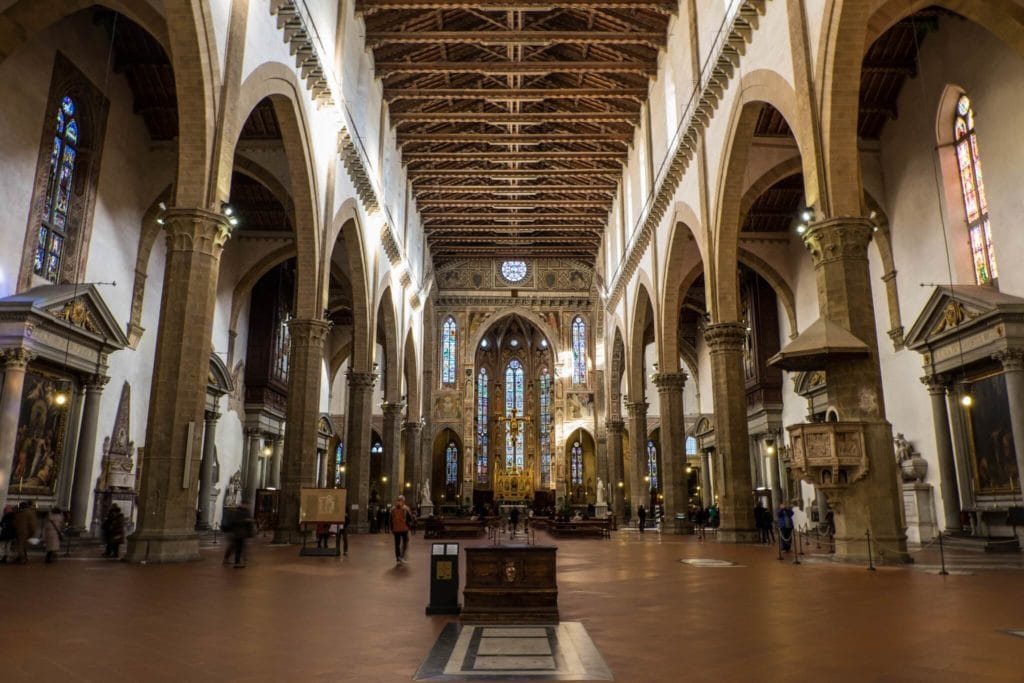
2. The six chapels
The six different chapels were dedicated to important Florentine families. The Cappella Maggiore is decorated with frescoes of the legend of the Holy Cross by Agnolo Gaddi. The Bardi and Peruzzi chapels, instead, were decorated by Giotto in person.
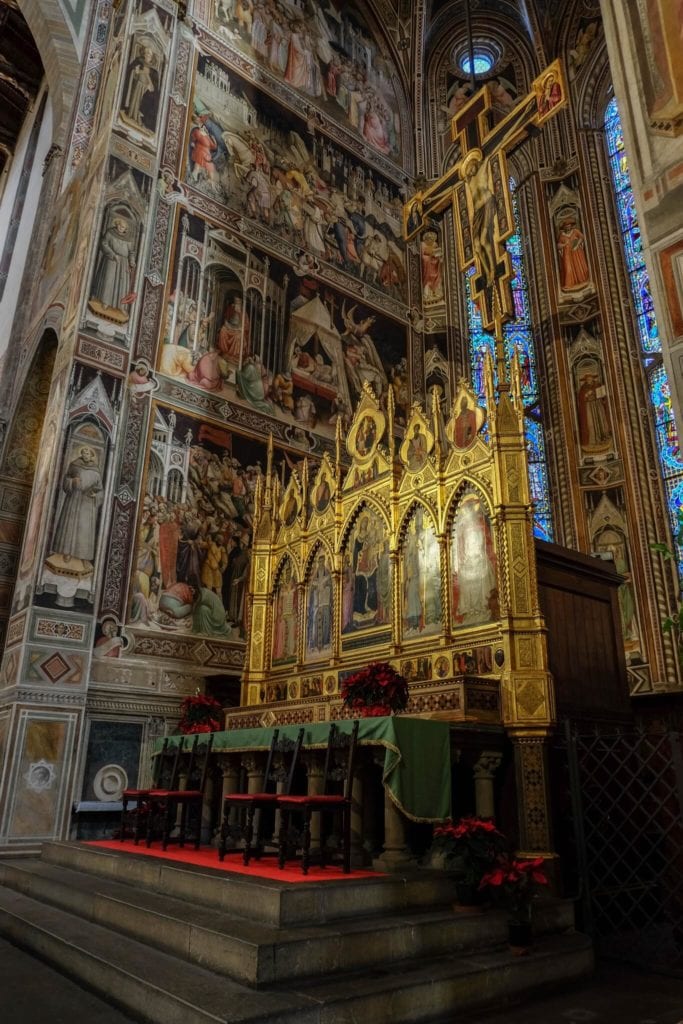

3. The Liberty of Poetry
The counter-façade hosts a familiar statue. I am sure you will think to have already seen it somewhere. It looks like the Statue of Liberty of New York City, isn’t it? The statue represents the Liberty of Poetry and it’s the funeral monument of the Tuscan playwright Niccolini. It may be possible that the french Auguste Bartholdi during his travels to Florence, drew inspiration to create the famous symbol of freedom for all mankind.

4. The side aisles
The two side aisles are plenty of magnificent sculptures. I could not stop going backward and forwards watching them. The right aisle houses the majestic grave of Michelangelo designed by Giorgio Vasari. It represents three crying women corresponding to the three Arts: Painting, Sculpture and Architecture. There is also the cenotaph of Dante Alighieri (he is buried in Ravenna) and other wonderful funeral monuments. The left aisle, instead, holds the grave of the great Galileo Galilei.
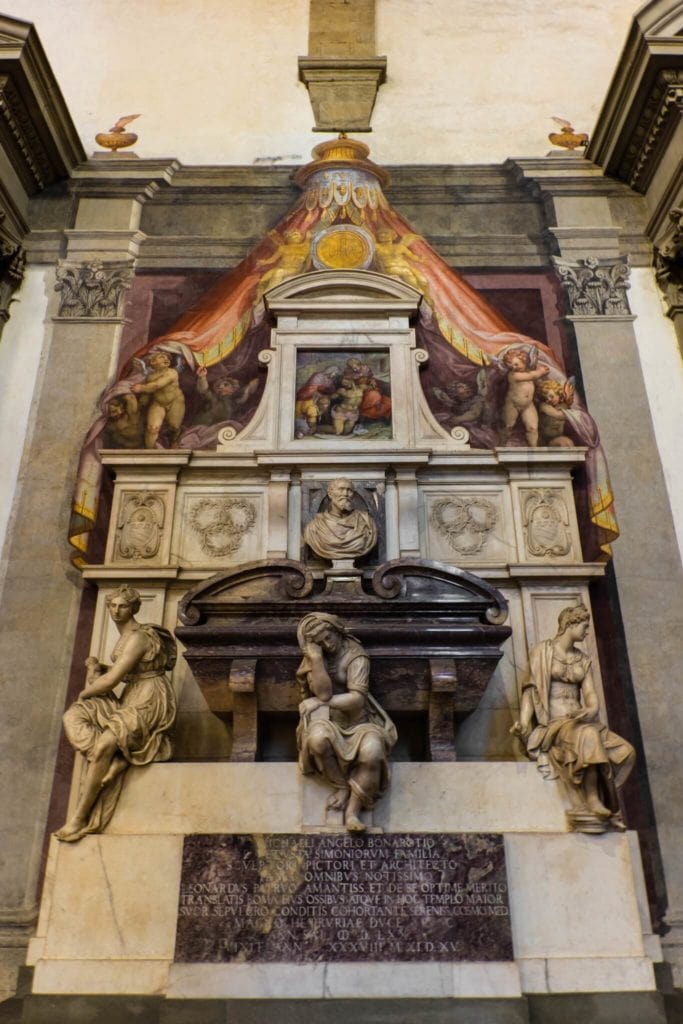
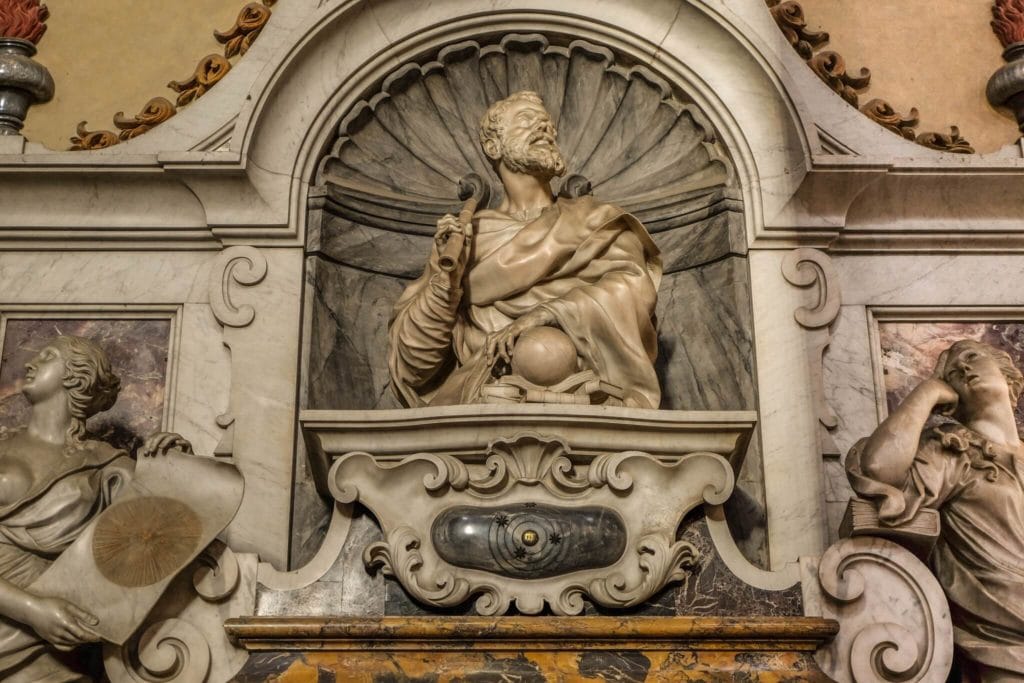
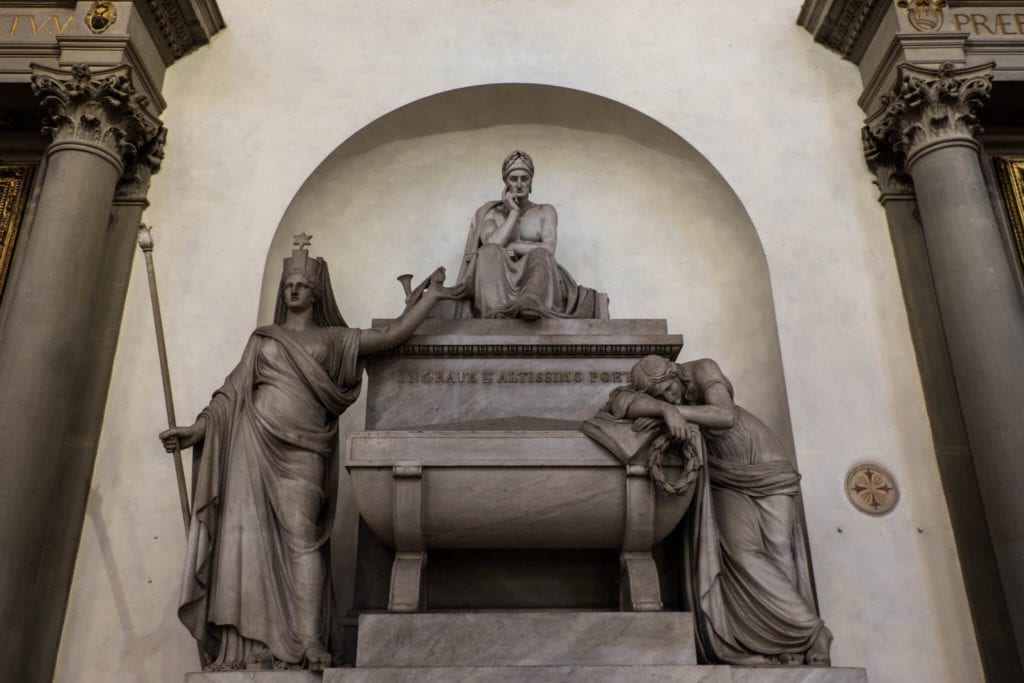
5. Tombs on the floor
If you look down at the floor you can see hundreds of marble slabs. They are the floor tombs of the aristocrats of the past.
6. Cimabue Crucifix
The Cimabue Crucifix is another gem of the Basilica. During the tragic flood of 1966, in the suburb of Santa Croce, the water reached a level of five meters and two centimeters of highness (16,47 feet). The crucifix, losing more than 60% of the paint on the surface, became one of the symbols of this natural disaster.
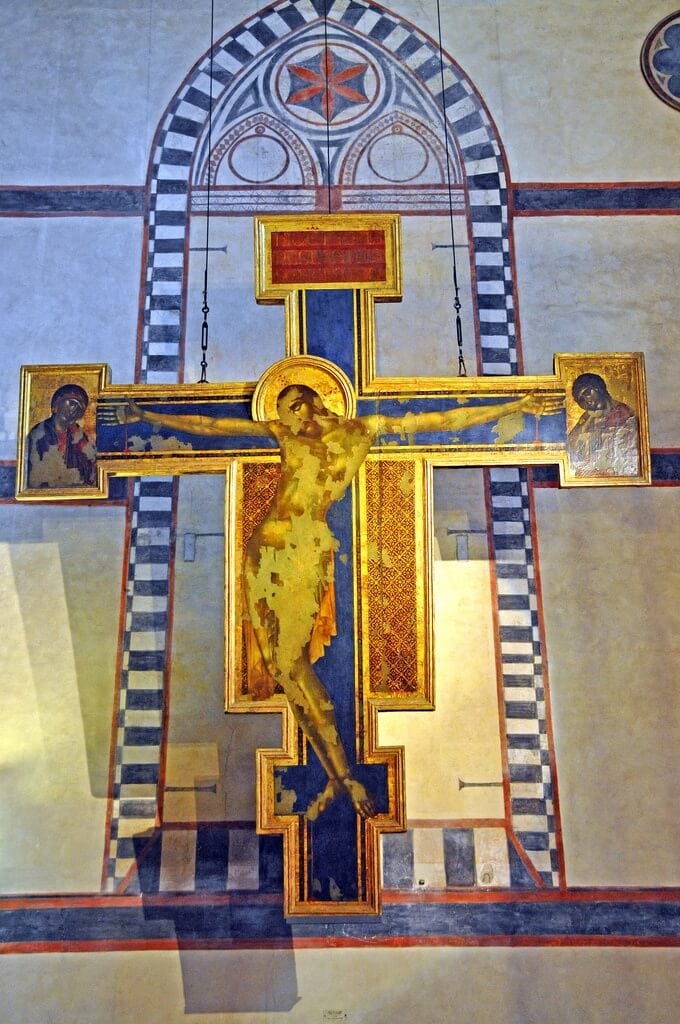
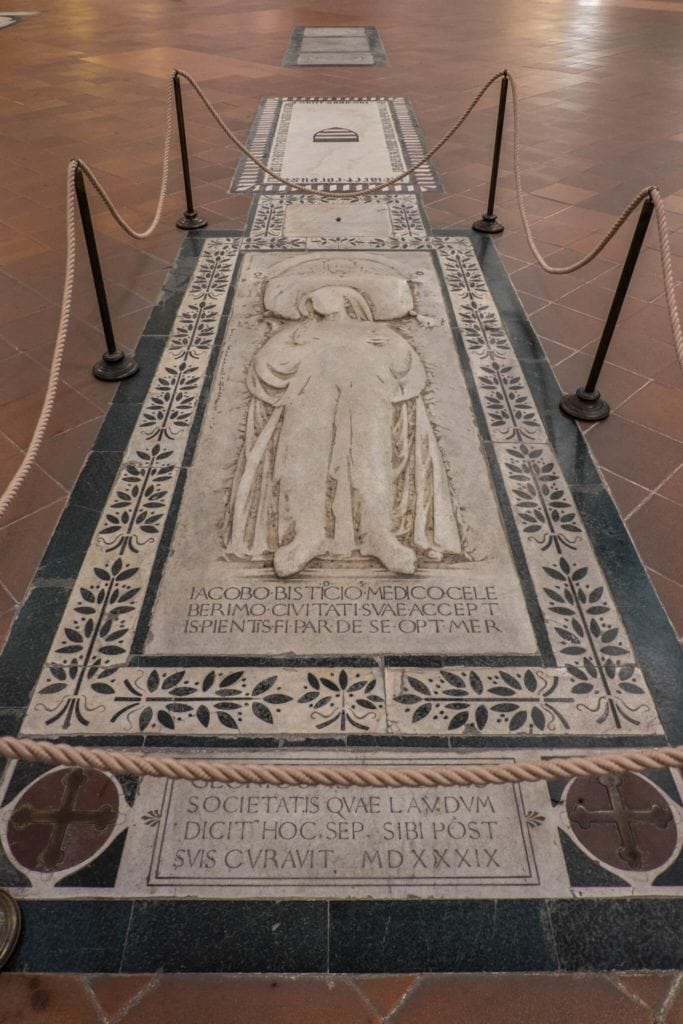
7. The Pazzi Chapel
Walking out of the church you get into the two cloisters. One has a rectangular shape, the other has a square shape. Here you find the Pazzi Chapel, a piece of art designed by Brunelleschi. He got inspiration from the Pantheon in Rome to create it. Don’t forget to take a picture with the bell tower and the sky as a background.
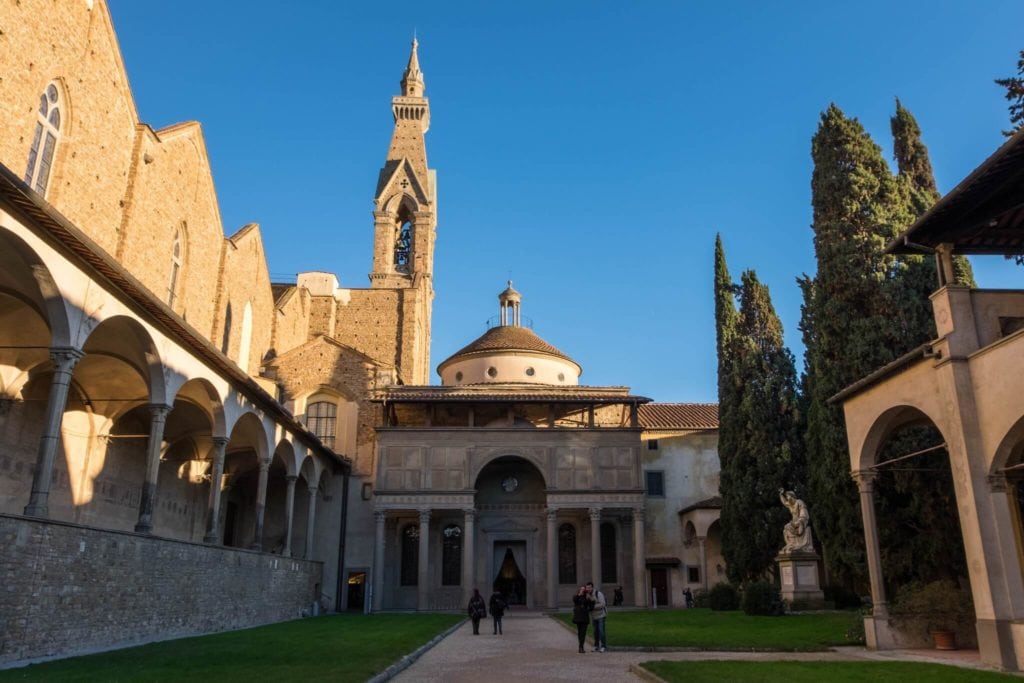
8. The Last Supper and the Life Tree
The Museum of the Opera of Santa Croce houses many frescoes, sculptures, wooden furniture, sketches, and reliefs. The last room of the museum is the refectory where you find the painting of the Last Supper and the Life Tree made by Taddeo Gaddi, one of the best pupils of Giotto.

Book a guided tour of Santa Croce
Other things to do in Florence
If you are planning to visit Florence, I also recommend you to have a look at these posts about the “Birth Land of Renaissance“:
- 10 most important places in Florence
- 10 unusual things to do in Florence by our reader Mrs. Anne Harrison.
- The F-Lights Florence Light Festival
- The Splendor of Palazzo Borghese of Florence
- Good Friday in Florence, the Tuscan experience of our friend and reader Joe.
- Self-Planned walking tour of Florence by Neha & Abhishek of “A Revolving Compass”
- Michelangelo’s David and the life of the Divine One
- How to get from Florence to Cinque Terre
I hope this post helps you to have an idea about Santa Croce in Florence, one of the most important places in the Florentine history of art. If you have any questions or curiosity, just ask.
Pin it for Later!
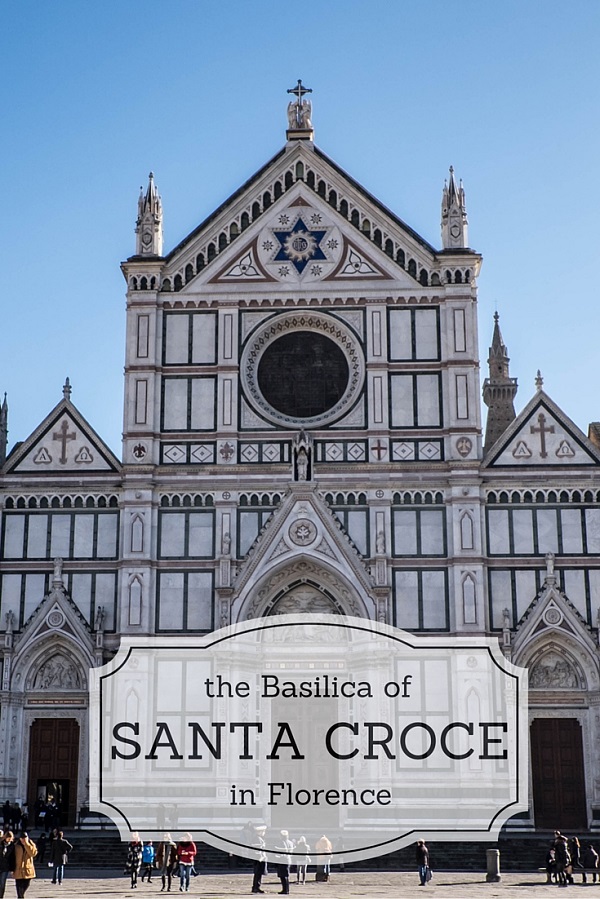
CIMABUE CRUCIFIX – PHOTO CREDITS: DENNIS JARVIS

Santa Croce was one of the best places I vistes in Florence
Dear Mahroo, thanks for the comment. I agree with you. 🙂